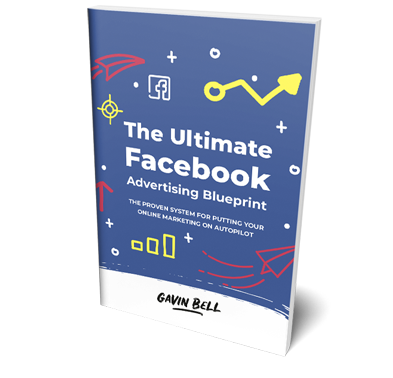So you want to create more content?
You all know that I’m a huge believer in content marketing — I’d go so far as to say that if you’re not creating online content, your business does not exist. Online content, whether it’s ads, videos, or organic content, is how you get your message out there. It’s how people find you. It’s invaluable. It’s how I’ve been able to build my audience.
But, I do know that creating quality content, consistently, isn’t easy. I’ve been publishing videos, blogs, and podcasts for five or six years now and it’s only in the last year that I’ve finally found a process that lets me do this without spending hours on content creation each week — without compromising on quality.
So, if you want to create more content and do it far quicker than I did, keep on reading to find out the exact process I use to create as many as 25 pieces of original content each week…
Step 1: Content planning
Planning your content is actually a two-step process.
To begin, you need to develop your overall strategy. To do that, have a think about the problems your customers are facing, about what they’re searching for on Google, about the questions they tend to ask you. What are they interested in? What do they want to learn more about? And consider too what your competitors are posting on their social channels, and what’s working for them. The answers to these questions (as well as the questions themselves!) will become the foundation of your content strategy.
Once you’ve got a good idea of the type of content you’re going to be posting, you need to create a content ideas bank. For this, I swear by Apple Notes, because when I’m on the road, I can just type any content ideas I have into my phone.
So whether you use an app, or a notepad and pen, make sure you always have a way to record any ideas or potential topics that come to you when you’re running, commuting, or scrolling through your social media feeds.
Step 2: Schedule your content creation
The biggest obstacle to being able to create more content? Time.
I get it: we’re all busy. And if your audience is still on the small side, it’s even harder to find the motivation for content creation when you’re getting hardly any views at all. It can feel like a lot of time and effort for very little reward.
There’s only one way through this stage: you have to be super strict with yourself and schedule content creation time into your diary. Whether you find the time this week, next week, even next month, just do it. Set aside half a day, block it out, and make sure you dedicate it to creating content.
For me, it’s a couple of hours every Tuesday morning. I set aside time to sit down in front of the camera and make my videos. And it’s sacred time. I’ve set up a calendar block so no one can book an appointment with me then, and it means I don’t have to think about content creation at any other time during the week, so I can get on with other things.
Step 3: Advance planning
Now, the only reason my Tuesday morning filming goes so well, is because I’ve planned my videos in advance.
There’s nothing worse than getting to your weekly content creation time and then stalling because you have no idea what to create. So advance planning is crucial.
Project management tools are vital if you want to create more content: I use Asana and it helps me stay three to four weeks ahead of my content publishing schedule. In Asana, I’ve created a board called ‘Editorial calendar’, and it has sections for every stage of my content process, from ideas, to video production, to blog creation, to publication.
So generally on a Friday, I’ll check my content ideas bank, choose a title, add it into Asana where I have video templates already set up, and choose a date for publication. Then I’ll use my templates to outline all of the tasks I need to complete so that I’m ready to sit down and film on the Tuesday morning, and publish the video on time. So say I want a video to go out on the 26th November — I know that I’ll have to film in advance, so I might set filming for the 12th November, and assign the task in Asana for that date. And so when we get to the 12th, Asana will ping me a message to remind me that I’m due to film that video.
All of which means that when my content creation times rolls around, I always know exactly what I’m going to be creating.
Step 4: Creating the content
Here’s the bit I really love: camera on, ready to go. You might not be quite so keen. You might need a few takes, you might mess up your lines and you might feel super awkward at first, but just keep at it. Try to forget you’re speaking to a camera and pretend you’re just having a one-to-one conversation (oh, and if the tech side of things is getting in the way of you being a video content machine then check out my blog on how to create the perfect home office video studio.
If you want some more tips on how to make your content great, check out this blog: The 7 principles of creating great content.
The main thing is you film that video, because step 5 is where the fun begins…
Step 5: Breaking down your content
Now, so far I’ve focused on video creation — but clearly I’m not creating 25 original videos every week, right?
So how do I get from one video, filmed every Tuesday, to over 25 pieces of content each week?
It’s all about pillar content and micro content
My videos and podcasts are pillar content — the main event if you like. But each one is a starting point for countless other pieces of micro content.
So the video that goes along with this post is around 10 minutes. Once I’ve ticked filming off my to-do list in Asana, I know that the next task is to upload it and send it to my editor who’ll cut out the rubbish bits, edit the good bits, and generally make it look nice and polished. But more than that, my editor will take two or three snippets from the original video and turn them into separate videos. I typically ask them to create something funny, so it might be a blooper, or a part where I’ve said something stupid. Then I like another couple of parts that can have value as a standalone two-minute micro video.
Already that’s three extra pieces of content from just one 10-minute video.
Next I’ll ask my editor to provide a variety of formats, like square format, landscape format, and also portrait format, so we can use the video across all the different platforms. We can add it to Tik Tok if it’s something funny, we can add it to Instagram stories, we can add it to Instagram TV, we can add it to Instagram itself. All of a sudden we’ve doubled the number of videos that we have.
Once the editor has created six, seven, eight pieces of content for me, I don’t actually do anything with that content. It immediately gets sent to Natalie. Now Natalie’s job in the business is to publish all the content on YouTube, on Facebook, on LinkedIn, and on Instagram, to turn videos into blogs and create social content based on each video. She’s also responsible for coming up with caption ideas for me, taking care of the SEO work on my website, as well as promoting my content.
And that’s when we can break the content down even further. Each piece of micro content can be adapted for Instagram stories, for LinkedIn, for Twitter, for whichever channels you use to connect with your audience.
Creating a content machine
You can see that the real key to creating multiple pieces of content each week is that I don’t do it alone.
Yes, I sit down and I film a video, but after that there’s very little for me to do. We already know that creating content takes a whole load of time, but we often forget that we can hire people to help us out.
For me, I just love creating the pillar content, writing scripts, filming videos, interviewing people for my podcasts. The other stuff — the editing, the content promotion — not so much.
So it makes perfect sense to outsource it to the people who do love it, and who’re great at it. All of a sudden, instead of just you creating and promoting a single piece of content, you have a whole content machine!
So if you’re struggling with creating content, follow this process: have a content ideas bank, set time aside, film that content, hire people to edit it for you, hire people to promote that content for you, and try and figure out how you can make that content go as far as possible. Take one thing and turn that one thing into five things, into 10 things and then promote that, and then turn those 10 things into 20 things and immediately you’ll see your audience build.
You’ll spend less time but you’ll have much more impact. You’ll have cracked the quality vs. quantity conundrum once and for all.







